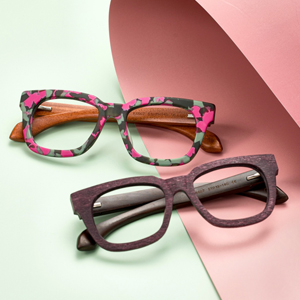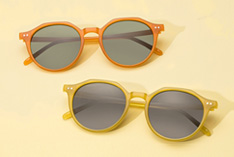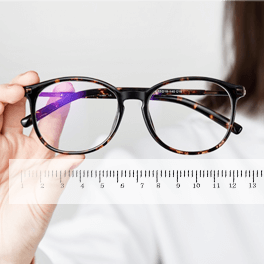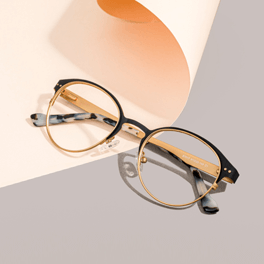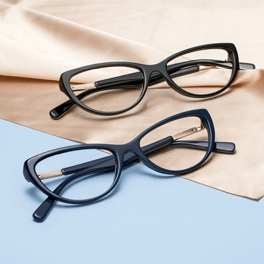FAQ
Quick Links
Adjust Your Frames to Fit
Glasses should sit comfortably on the bridge of your nose and shouldn't press against your eyebrows or cheeks. Taking glasses to an optical store to get them adjusted will cost you more time and money. Self-adjusting your glasses is a valuable skill appropriately.
Frames have different adjustment methods due to their material. You need to know the material characteristics before you start to adjust them.
For Plastic Frames
Plastic frames are not very pliable at room temperature. Due to their elastic nature, adjusting plastic frames can be more difficult than metal frames. They're likewise more difficult to deform than metal frames. You can warm up the frames before adjusting them. But you should avoid running warm water over your lenses.
Basic steps:
Step 1: Run the temple arms under warm water (90℉-110℉/32℃-43℃) for at least 30 seconds.
Step 2: Apply LIGHT pressure to the area where you need to adjust.
Step 3: Try your glasses on after each adjustment before making more adjustments.
Step 4: Place your glasses on the table to check if they sit stably and if the temple arms are adjusted consistently.
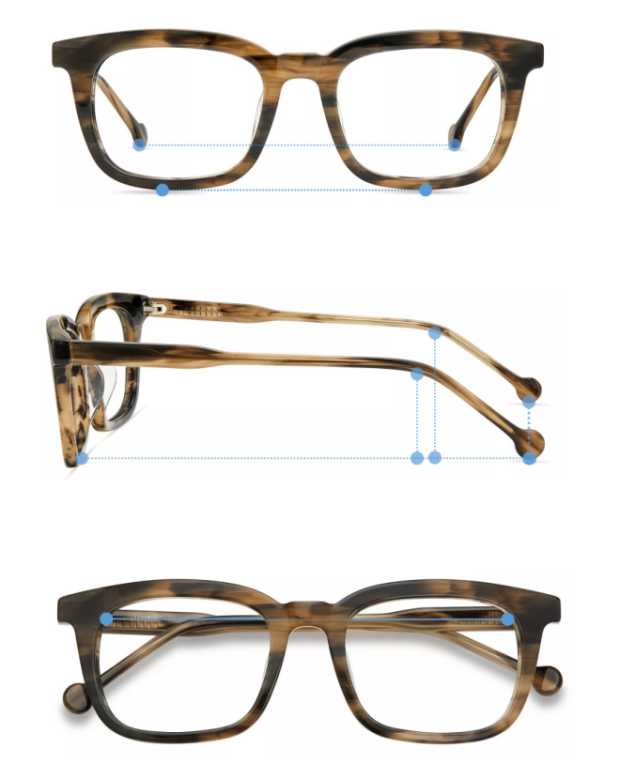
Helpful tips:
◊ Warm water is around 90℉(32℃) and not above 110℉(43℃). DO NOT use boiling water.
◊ Avoid running warm water over the lenses, as it can affect the lens coatings.
◊ Adjust frames a little at a time to avoid overcompensating.
◊ Make sure to try your glasses on after each adjustment.
For Metal Frames
Metal frames do not require heat to adjust them but may require frequent adjustments since some metals used to manufacture eyeglasses are easily bent through daily activity.
Basic steps:
Step 1: Apply LIGHT pressure to the area where needed until a noticeable change is made.
Step 2: Try your glasses on after each adjustment before making more adjustments.
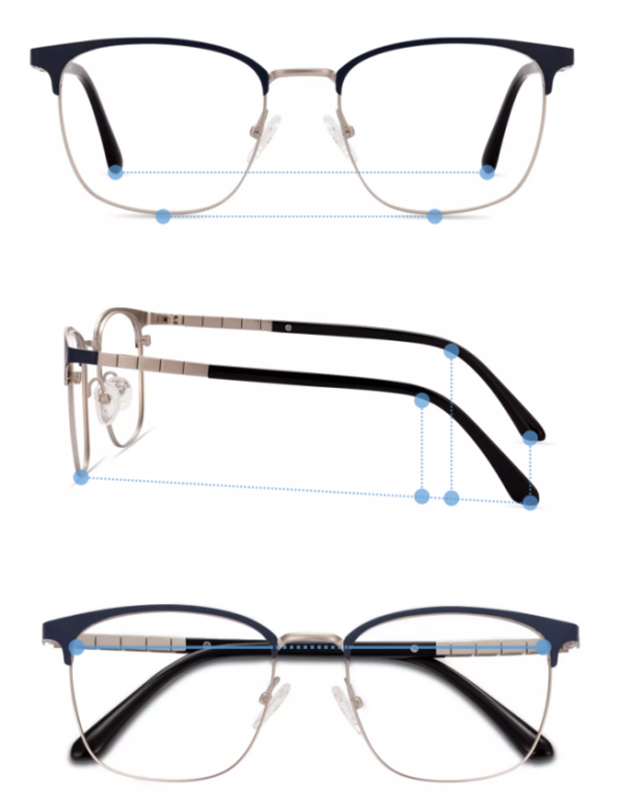
Helpful tips:
◊ Adjust frames a little at a time to avoid overcompensating.
◊ Make sure to try your glasses on after each adjustment.
HOW TO ADJUST THE FRAMES IF
1. Pinching Your Nose/Ears/Head
FOR PLASTIC FRAMES:
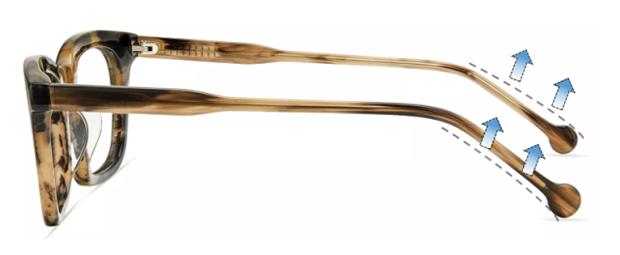
Grip each temple arm and slightly bend upward and outward at where it crosses over your ear to achieve a relaxed fit behind your ears.
The angle of each temple arm should be the same.
FOR METAL FRAMES: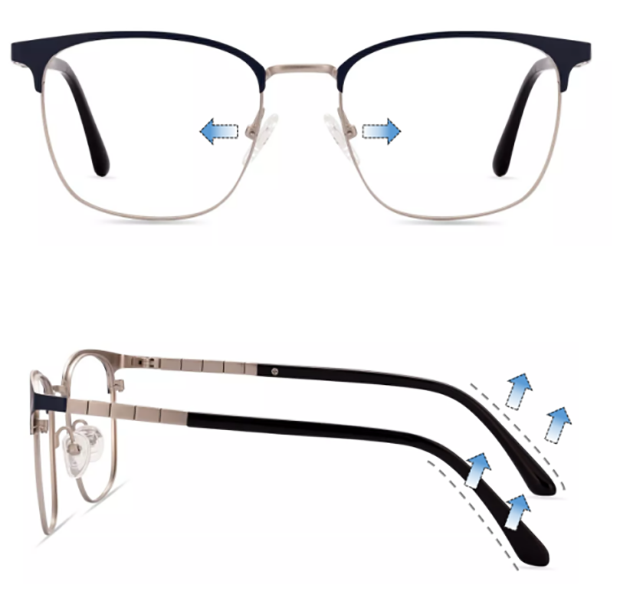
Push the nose pads outward until they fit comfortably.
The angle of each nose pad should be the same.
Grip each temple arm and slightly bend upward and outward at where it crosses over your ear to achieve a relaxed fit behind your ears.
The angle of each temple arm should be the same.
2. Slipping Down Your Face
FOR PLASTIC FRAMES:
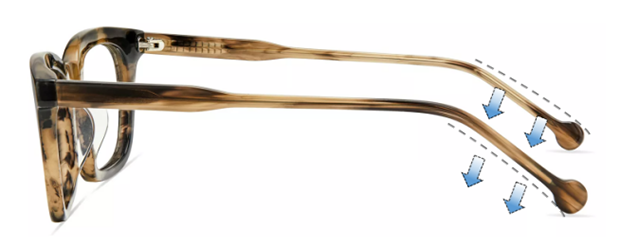
Grip each temple arm and slightly bend downward and inward at where it crosses over your ear to achieve a tighter fit behind your ears.
The angle of each temple arm should be the same.
FOR METAL FRAMES:

Push the nose pads inward until they fit comfortably.
The angle of each nose pad should be the same.
Grip each temple arm and slightly bend downward and inward at where it crosses over your ear to achieve a tighter fit behind your ears.
The angle of each temple arm should be the same.
3. One Lens is Higher Than the Other
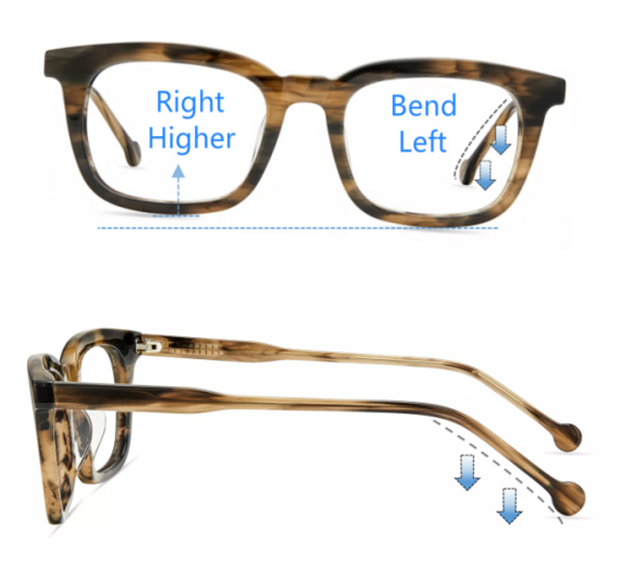
Bend the opposite temple arm slightly at where it crosses over your ear downward to keep the height of the two lenses consistent.
The angle of each temple arm should be the same.
4. One Lens is Closer to Your Eye Than the Other

Bend that lens's arm slightly at where it crosses over your ear inward and the opposite arm outward to keep the distance consistent.
The angle of each temple arm should be the same.

